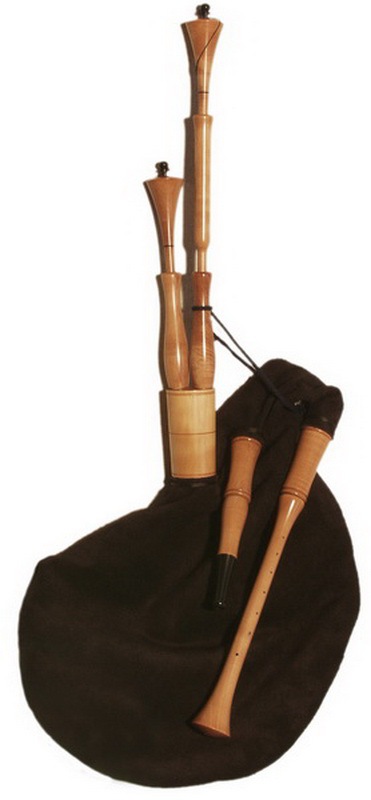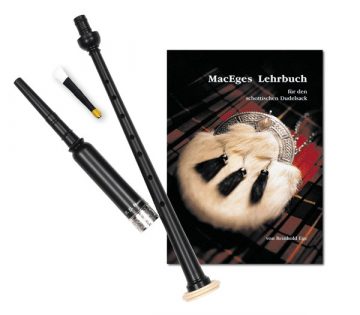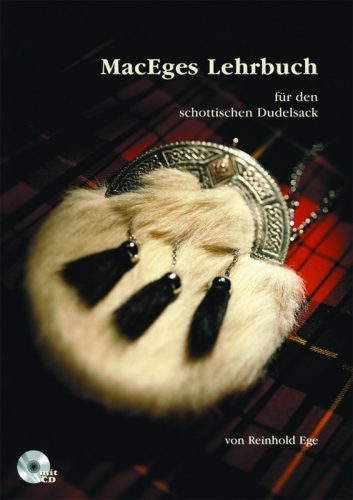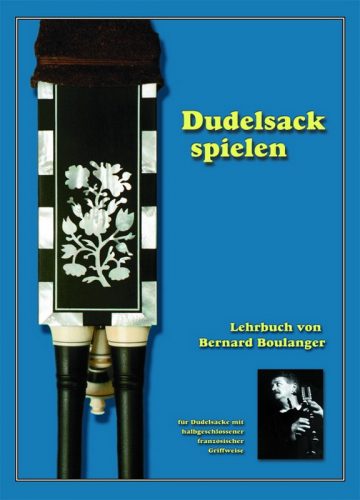Description
from Bernard Boulanger
For a long time, the bagpipe scene had to wait for a comprehensive textbook for these bagpipes, which are now widely used throughout Europe. With their typical French fingering they are – next to the Highland bagpipes – certainly the most popular bagpipes at all!
The musical spectrum of these instruments goes far beyond the possibilities of other bagpipes, because due to their large range and chromaticism they open up a wide range of musical expression for the musician. Especially in the (folk) dance scene, they are played everywhere today.
Bernard Boulanger is himself a recognized virtuoso on this instrument and has been teaching students in the north of France for over 20 years. His music school ‘La Piposa’ has produced many excellent musicians over the years and has rightly earned the high recognition of the French bagpipe scene. Also a teacher by profession, Boulanger has been working on this book for over 12 years and has succeeded convincingly in systematically describing and explaining the variety of playing and ornamentation techniques.
All the basic playing techniques are explained clearly in the first part of the school, and a variety of exercises provide ample opportunity for the learner to practice what he or she has learned. The melodies used in the book are selected in precisely appropriate gradations of their degree of difficulty; they deliberately do not consist of a standard repertoire, but provide the musician with precisely the knowledge that he will later use in the interpretation of his own repertoire. The accompanying CD with 99 exercise titles additionally clarifies the contents conveyed in the first part through neatly recorded audio examples.
In the second part of the school, the author specifically goes beyond the usual ornamentation techniques and explains in detail how to implement well-known Scottish ornaments on this type of bagpipe.
In doing so, the book is designed to be suitable for self-study as well as support for courses and for regular instruction with a teacher. It was created in close contact with experienced musicians, music teachers and instrument makers. His well thought-out system has already proven its worth in Boulanger’s many years of practical work.

The book is also available in French and in English!
English:
Tutor book in German language.
The piping scene had to wait quite a long time for a comprehensive tutor for these bagpipes, which are now widespread in many parts of Europe. With their typical French fingering they are – next to the Highland Bagpipe – probably the most popular kind of bagpipes.
The musical range of these instruments far exceeds the possibilities of other types of bagpipe. Because of their wide tonal range and their chromatic notes, they open up a large spectrum of musical expression to the musician. In particular in the (folk) dance scene they are practically ubiquitous nowadays.
Bernard Boulanger is an admired virtuoso on this instrument himself. For more than 20 years, he has been teaching novice players in the North of France. His school of music, ‘La Piposa’, has produced a number of outstanding musicians in recent years and really earned the high esteem in which it is held by the French piping scene. A schoolteacher by profession, Boulanger has been working on this book for more than 12 years. He has managed to describe and explain the great variety of playing and ornamentation techniques systematically.
All basic playing techniques are described in an easily comprehensible style in the first section of the tutor. A large number of exercises provides ample opportunity for the student to practice what they have learned. The tunes used in this book are chosen to fit the current level of difficulty. On purpose, they are not taken from a standard repertoire, but give the musician exactly what is needed in order to build up and perform an individual repertoire.
The CD included with the book contains 99 exercises and demonstrates the theory presented in the first section with carefully recorded examples.
In the second part of the tutor, the author goes beyond the usual ornamentation techniques and explains in detail how to reproduce the well-known Scottish grace notes on this type of bagpipe.
The concept of the book makes it suitable for self-study as well as for use in courses and in regular lessons with a teacher. It was written in close contact with experienced musicians, music teachers and instrument makers. Its well thought-out systematics have been tried and tested for years in Boulanger’s practical work.
The book is also available in English and French language.
About “Half Closed” fingering: Some 25 years ago, instrument makers all over Europe, including for example Remy Dubois in Belgium, Bernard Blanc in France, started again to build bagpipes with half-closed French fingering. In spite of their many different names, such as ‘Cornemuse’, ‘Bechonnet’, ‘Cornemuse du Centre’, ‘Schäferpfeife’, or ‘Flemish bagpipe’, they are always equipped with the same type of chanter, usually tuned to G/C. These sophisticated instruments provide musicians with a principally chromatic range of 1 1/2 octaves and a timbre which mixes well with the sound of hurdy-gurdy, accordion and many other (dance music) instruments. The variability of their build and their harmonic, assertive sound qualify these bagpipes for many types of music: The music of the Middle Ages sounds just as convincing as traditional European dance tunes, new compositions or polyphonic arrangements in the style of Jürgen Obermeier. This type of bagpipe can be heard frequently on our CDs and is being taught in numerous music courses in Germany and abroad.
</font />
</a />
Order no: 59-9
ISBN: 978-3-927240-59-9
Format: DIN A4
Number of pages: 156 pages with CD
Binding: Wire-O spiral binding






Reviews
There are no reviews yet.